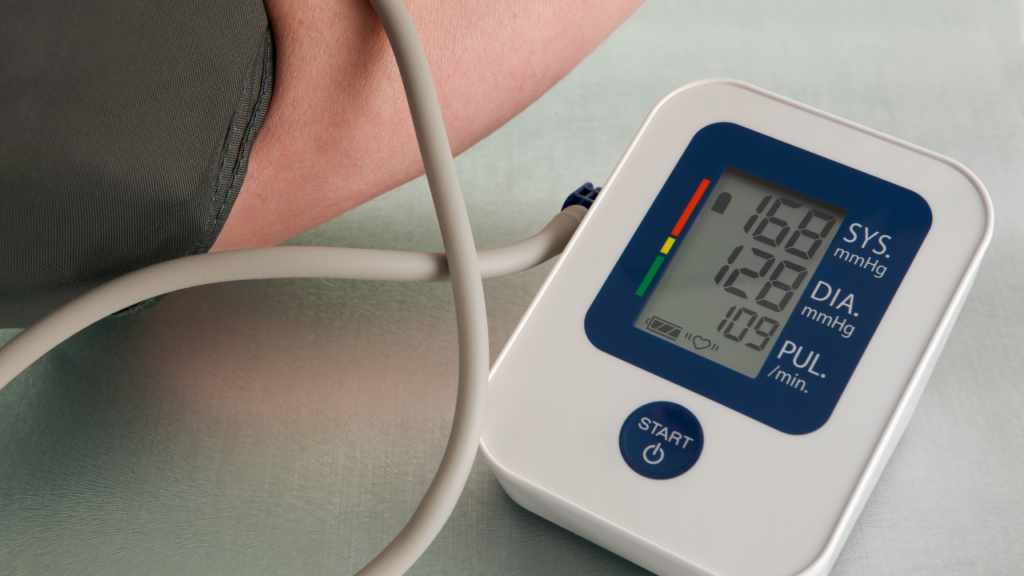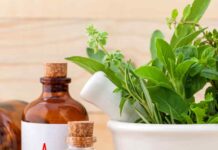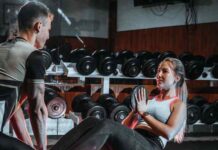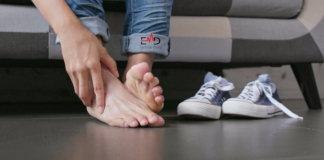Table of Contents
Exercise Daily – PVCs are irregular heartbeats that begin in one of your heart’s bottom chambers and go up to the upper chambers. They are prevalent and may induce palpitations, lightheadedness, or sometimes no symptoms at all. In this article, we will discuss the best diet for PVCs.
A Premature Ventricular Complex (also known as a Premature Ventricular Contraction) is an additional electrical impulse. It originates from one of the heart’s ventricles and causes the heart to beat prematurely.
The additional heartbeat occurs before the following regular heartbeat has an opportunity to begin, causing the extra impulse.
PVCs are quite common and, unless they produce symptoms or recur often, usually do not need therapy.
Symptoms of PVCs
Often, persons who have PVCs may not notice them at all. They may notice them during peaceful periods when they are not disturbed, such as when they are resting at night. The majority of people who suffer symptoms of PVC complain of palpitations.
These palpitations are often characterized as “skipped beats” or as a “pounding heart.” These strange heartbeat feelings may be uncomfortable for some individuals, and they may need medical attention.
Other PVC symptoms may include the following:
- A feeling of being out of breath (dyspnea)
- Sensation of being lightheaded or faint (lightheadedness)
- Tiredness
- Thumping feeling at the back of the neck
Causes
PVCs are prevalent, although the reason for their occurrence is not always evident. On rare occasions, they may occur in otherwise healthy individuals. The majority of the time, however, they affect patients who already have heart disease.
Moreover, people suffering from persistent high blood pressure (hypertension) may have structural changes in their hearts. This may result in the development of PVCs. Hence for management, it is important to take the best diet for PVCs.

Damage to the heart may also cause the cells of the ventricles to become electrically unstable, resulting in PVCs. PVCs are related to a variety of other cardiac diseases, including:
- Coronary Artery Disease (CAD)
- Dilated Cardiomyopathy
- Hypertrophic Cardiomyopathy
- Heart Valve Disease
- Myocarditis
- Congenital Cardiac Disease
It is possible that other health conditions or diseases, which are not necessarily connected to the heart, may also contribute to the development of PVCs in certain cases. These are some examples:
- Disproportionate electrolyte concentrations (e.g., low potassium or low magnesium levels in the blood)
- Substance abuse such as tobacco, alcohol, and cocaine
- Oxygen saturation in the bloodstream is low (hypoxia)
- Anxiety or excessive adrenaline release as a result of physical activity or the use of allergy medicines such as antihistamines
- Digoxin toxicity
- Certain non-heart illnesses, such as thyroid disease or obstructive sleep apnea
Interestingly, despite the fact that caffeine is a contributing factor to PVCs, studies have failed to demonstrate a relationship.
Diagnosis
The presence of PVCs may be suspected even if no symptoms are evident. If the patient has an erratic heartbeat on physical examination, an electrocardiogram may then be used to confirm PVCs.
Flat discs that are capable of detecting electrical activity in the heart are put on your chest during this examination. The results are shown as graphs on a computer monitor. You might need to choose the best diet for PVCs with other management options after ECG.
In other circumstances, doctors may discover PVCs by chance during a regular ECG. This is during a preoperative examination before a surgical procedure. When symptoms are present, doctors identify PVCs using an electrocardiogram (ECG).
A more advanced instrument known as an ambulatory ECG monitoring system may also help in the detection of PVCs. Patients wear the device for an extended period of time to capture and record irregular cardiac rhythms (arrhythmias) that may occur at any moment.
A Holter monitor is a form of ambulatory ECG equipment that may be used to identify and track the frequency of PVCs in a patient’s heartbeat. It continually records the electrical activity of your heart for 24 to 48 hours, depending on the model.
A cardiologist, who specializes in the treatment of cardiac disorders, examines the recordings made by ambulatory ECG equipment. He or she may determine the presence of PVCs (or another arrhythmia).
Prevention of PVCs
Diet
The consumption of potassium and a magnesium-rich diet may be sufficient to bring your PVC levels under control. The electrolytes in such a diet have the potential to have a soothing impact on the heart’s cells. These meals are among the healthiest that you may eat.
In addition to bananas, a person may consume potassium-rich foods such as spinach, beans, broccoli, and melon. Magnesium is found in abundance in nuts, seeds, and “greens,” which might include pumpkin seeds, spinach, and beans.
Even while some individuals may merely need monthly check-ups with their doctors and potentially annual echocardiography, others will require medicine or surgery that utilizes radiations to destroy a portion of the heart’s tissue.
Organic Green Split Peas
Since Organic Green Split Peas by Food to Live includes a significant amount of practically every key mineral, it is possible to create a lengthy list of the beneficial nutrients present in this product.
However, it’s important to remember that they are a wonderful source of magnesium as well. Hence, they are the best diet for PVCs. They also include nutritional fiber and have a low glycemic index, making them a healthy choice.
Although Green Peas have a high nutritional content, this is not the only reason why these legumes are a good option. Cooked with the appropriate sauce and spices, they may be served as a main meal on their own.
Organic Dark Red Kidney Beans
Kidney beans are the greatest plant-based potassium source available and are an excellent vegan meal. Plenty of dietary fiber can be found in organic kidney beans from Food To Live, which can be included in almost any meal plan.
The minerals and B vitamins included in these kidney beans include potassium, iron, manganese, copper, phosphorus, and vitamin B. Our Kidney Beans are also high in fiber and protein.
Food made with kidney beans helps you feel fuller for a longer period of time since legumes are low in calories. Organic Kidney Beans are of the highest quality, and they are processed in a state-of-the-art plant.
Daily Nuts Healthy Mix Multipacks
It is simple to include preportioned mixes into your regular meal or to enjoy them as a snack. Specific proportions ensure that each component has an equal quantity of each other. The blend is clearly visible on the front of each pack and is the best diet for PVCs as a snack.
Plant proteins, antioxidants, and magnesium are all included in the mixes, making them a guilt-free complement to a heart-healthy diet. Nitrogen Flushed packets keep oxygen out and retain its freshness for a longer period of time.
The nuts packets are small enough to fit into your backpack, handbag, lunchbox, or even your pockets. So, you can carry them with you everywhere you go.
Control Your Blood Pressure
Some patients have discovered that as their blood pressure rises, they are more prone to develop PVCs. In order to prevent PVC and other heart disorders, monitor your blood pressure with a BP apparatus or visit a physician if your blood pressure is consistently above.
Get Stress Under Control
When you are stressed, your body produces more adrenaline and cortisol, among other stress hormones. This puts additional pressure on your heart and increases the risk of PVC.
Consequently, the first step is to reduce your stress levels by engaging in activities that are both relaxing and productive, such as yoga.
Eliminate PVCs Stimulants
Excessive use of coffee, narcotics, alcohol, or any other nicotine product might result in the onset of PVCs. As a result, attempt to reduce your intake of these stimulants so that your PVC remains under control.
Ensure Enough Sleep
The majority of people with PVC do not get the recommended amount of sleep. When you don’t get enough sleep, your stress levels might rise, which can result in PVC. Set up a daily sleep regimen and make an effort to obtain at least 7 hours of sleep each night.
Treatment of PVCs
PVCs are complicated to deal with since their effects might differ from one individual to another. The majority of scientific research now available implies that PVCs are not fundamentally harmful in most cases.
Even yet, PVCs should not be disregarded, particularly if they are interfering with the heart’s ability to pump normally. You should consult a cardiologist if they are generating noticeable symptoms. Your cardiologist might suggest the best diet for PVCs that will help the heart.
In addition, frequent PVCs (more than 12 per day) might be concerning. This is because they relate to a weakening of the heart muscle and the development of sudden cardiac death.
Patients with occasional PVCs, no symptoms, and a normal Left Ventricular Ejection Fraction (LVEF) should have regular follow-ups with their primary care physician. Addressing and controlling PVCs is a good option when there are potentially reversible causes.
In addition to it, consider the following:
Echocardiograms
Patients who have frequent PVCs but no symptoms and a normal Left Ventricular Ejection Fraction (LVEF) should have annual echocardiograms and follow-up with a cardiologist.

Medication
For people who are experiencing symptoms and/or have a decreased LVEF, medication is necessary. Doctors often begin with a beta-blocker or a calcium channel blocker to alleviate the symptoms.
If the patient is unable to tolerate these drugs, doctors may suggest antiarrhythmic drugs. Although antiarrhythmic medications help to keep your heart rhythm regular, some of them are dangerous for heart health.
Aside from that, antiarrhythmic medicines, when used to treat PVCs, have been shown to increase the risk of mortality.
Radiofrequency Ablation
Radiofrequency ablation is a specialized kind of cardiac catheterization. An expert electrophysiologist who has sufficient knowledge of heart rhythm disorders performs this procedure. In this process, radiations kill cardiac tissue cause aberrant electrical impulses.
The procedure is painless and people experiencing severe symptoms of PVCs may benefit from this low-risk technique. Patients with a low Left Ventricular Ejection Fraction (LVEF) who experience frequent PVCs are also candidates for ablation, regardless of symptoms.
When treating PVCs, it is usually necessary to address reversible triggers or causes, along with taking the best diet for PVCs.
Frequently Asked Questions
What foods trigger PVCs?
Some of the foods that trigger heart palpitations include:
- Caffeinated food and drinks
- Sugar
- Alcohol
- Tyramine-rich food
- Theobromine-rich food
- Dietary supplements
What foods help PVCs?
Supplementation with omega-3 polyunsaturated fatty acids (PUFA) has been shown to lower the frequency of PVCs each day. Moreover, they help to lower the severity of their symptoms.
What should I avoid with PVCs?
Avoid excessive amounts of alcohol and caffeine, both of which may provoke PVCs. Avoid excessive stress and exhaustion, both of which may cause PVCs to form. Take care of any other medical disorders you may be suffering from, such as high blood pressure.
Please make every effort to attend all of your medical visits.
How can I naturally calm PVCs?
- Try out relaxation techniques such as Yoga
- Reduce your consumption of stimulants, such as Caffeine
- Stimulate the activity of the vagus nerve
- Maintain a healthy balance of electrolytes
- Keep yourself hydrated
- Avoid overindulging in alcoholic beverages
- Exercise on a regular basis
How do you stimulate the vagus nerve to stop palpitations?
Using the Valsalva maneuver, you may stimulate the vagus nerve, which can aid in the regulation of heart palpitations. The Valsalva technique is a method in which you hold your nose, seal your mouth, and attempt to forcefully exhale through your mouth.

This action activates the vagus nerve, which aids in the reduction of palpitations and the restoration of a normal heartbeat.
Also read: How Many Eggs Per Day Can Someone Eat on Keto Diet?
Take Away
Premature Ventricular Contractions are quite frequent, especially among persons who are otherwise in good health. PVCs, on the other hand, might induce symptoms and may signal the presence of an undetected kind of heart disease.
Finding PVCs should, at the absolute least, prompt you to do a more thorough evaluation of your heart. Consult your cardiologist if you suffer from any of the symptoms. Feel free to share your best diet for PVCs, and how did you manage the symptoms in the comments section!









